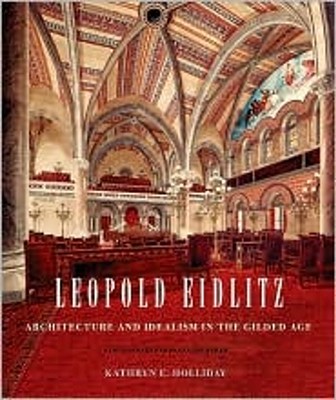You are here
Back to topLeopold Eidlitz: Architecture and Idealism in the Gilded Age (Hardcover)
Email or call for price
Description
The first critical examination of the work of New York architect Leopold Eidlitz, America's first Jewish architect, founding member of the American Institute of Architects, and the first American to define a modern organic architecture, this book reveals his formidable influence.
Though the organic tradition has long been understood to be a central defining feature of American architecture, associated most strongly with Chicago and Louis Sullivan and Frank Lloyd Wright, Eidlitz in fact began the exploration of the organic ideal a generation earlier in New York. Eidlitz served as a lightning rod in the world of New York architecture, fomenting dissent and debate among his professional peers. While he made enemies of powerful Beaux-Arts practitioners such as Richard Morris Hunt and George B. Post, he found allies in the progressive community, among them Frederick Law Olmsted and Peter Cooper, founder of the Cooper Union. Though Eidlitz's career faltered in New York in the 1880s, his blend of idealism and pragmatism, of science and art, became crucial to the further development of organic architecture in Chicago.
For Eidlitz, born in Prague and trained in Prague and Vienna, the organic metaphor provided a means of rationally approaching design according to natural law, producing modern buildings that expressed the true democratic spirit of the age. In buildings like the New York State Capitol at Albany, the Tweed Courthouse and Temple Emanu-El in New York, and P. T. Barnum's mansion Iranistan, Eidlitz created a fusion of structure and ornament that defied the Gilded Age's aesthetic conventions. Combining German romanticism and American transcendentalism with a reform spirit inspired by the nineteenth-century Jewish reform movement, Eidlitz in his prolific writing sowed the seeds of modern American architectural theory, focusing on buildings as organisms that could evolve.
About the Author
Kathryn E. Holliday teaches architectural history and theory at the University of Texas at Arlington. A graduate of Williams College and the University of Texas at Austin, she has written and lectured on the architecture of New York and New Orleans. This is her first book.
Praise For…
[W]ill probably be the authority on Eidlitz for many decades to come….Holliday’s scholarship in assembling this record is nothing short of exemplary.
— Studies in Decorative Arts
[T]his pioneering, hard-won monograph….[is] the best tale that could...have been woven from meager archival threads scattered around the world.
— Eve Kahn - Traditional Building
[L]ucid and informative….add[s] to our understanding of the organic ideal in American architecture.
— The Architect's Newspaper
[B]eautifully produced….Eidlitz is fortunate to have Holliday as his biographer for she treats his architecture with the greatest sympathy while carefully examining and explaining his work in the context of his theory….Holliday has managed singlehandedly to restore, and indeed amplify, the reputation of the hitherto almost forgotten architect, Leopold Eidlitz.
— Arris
